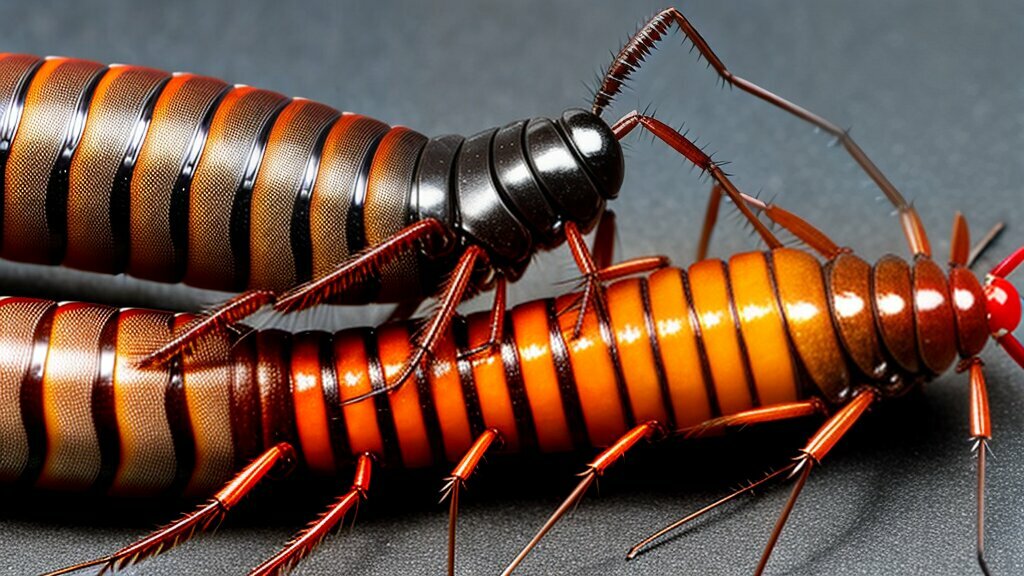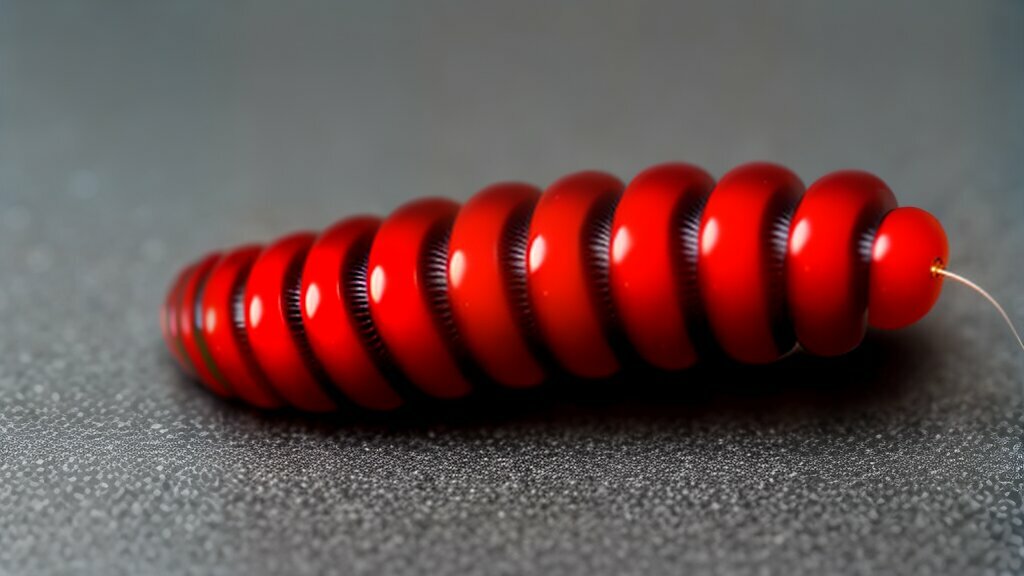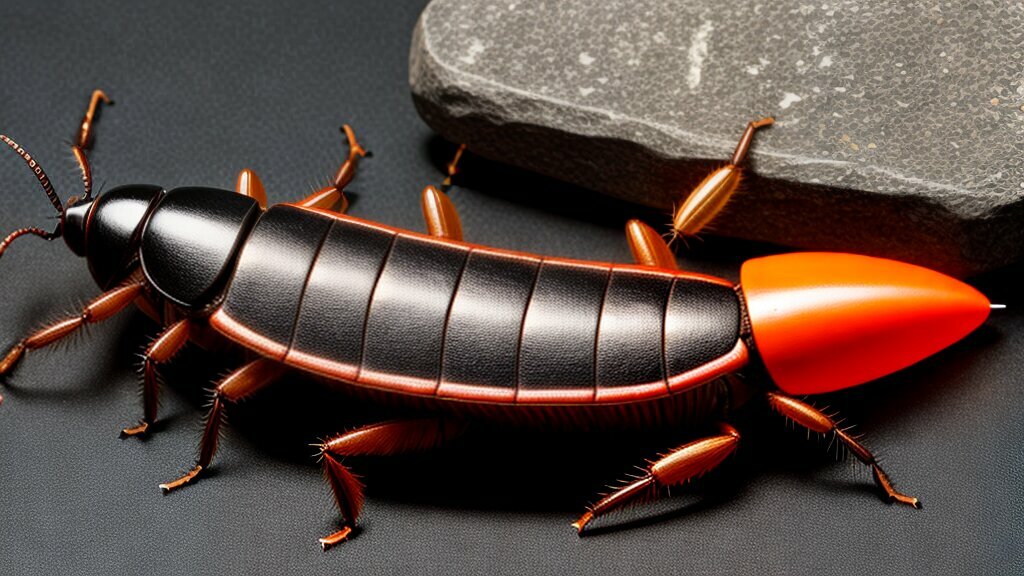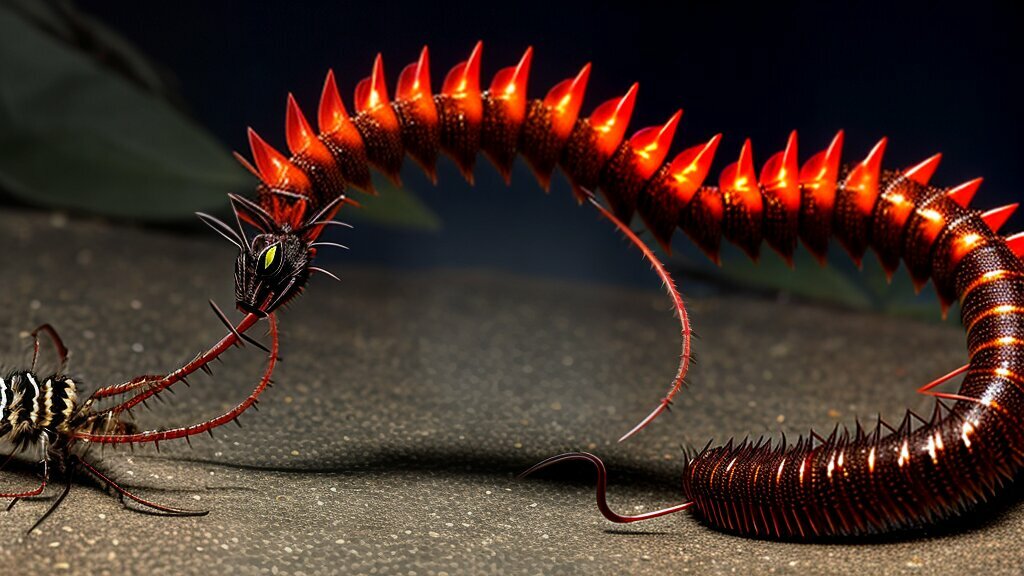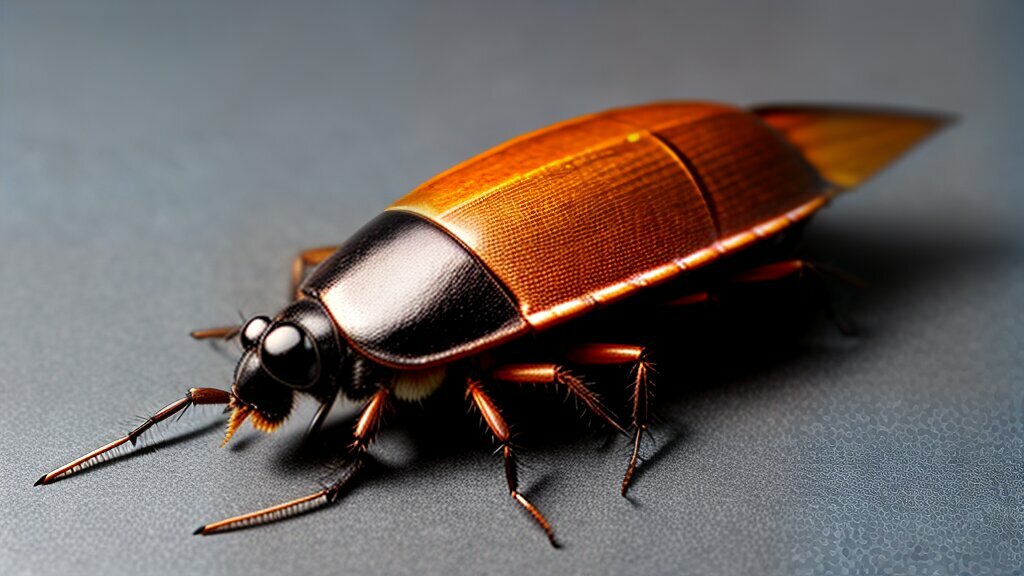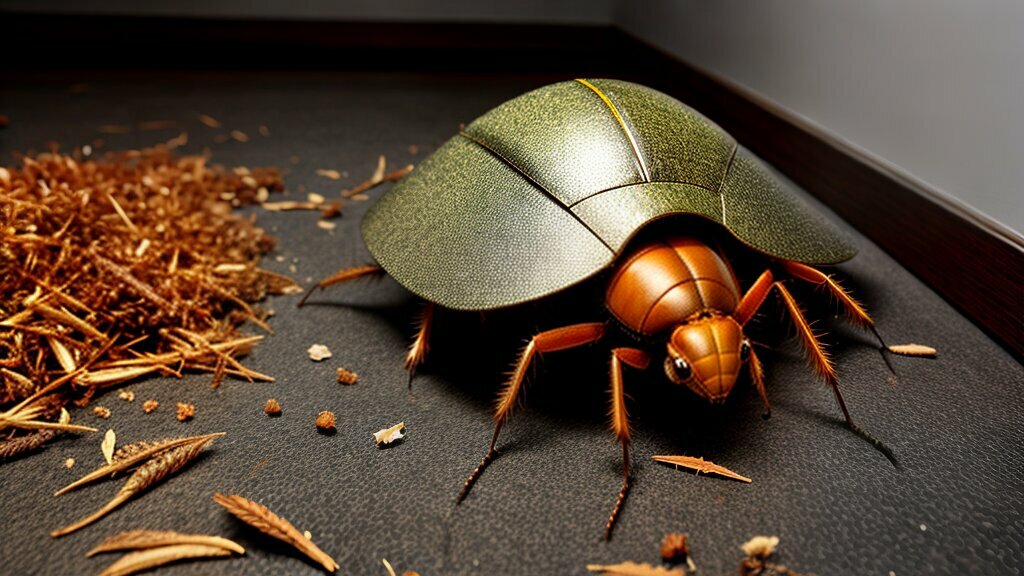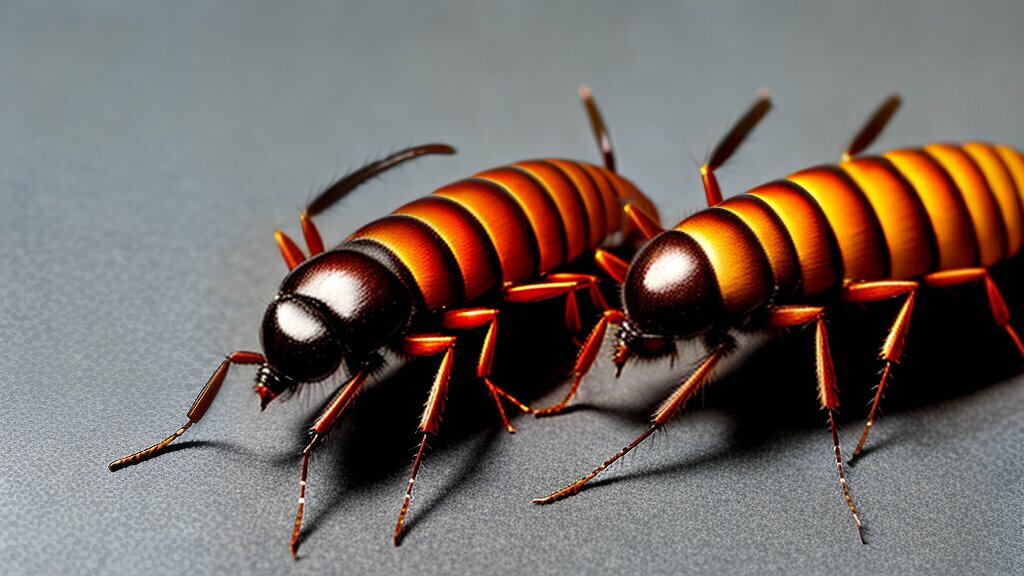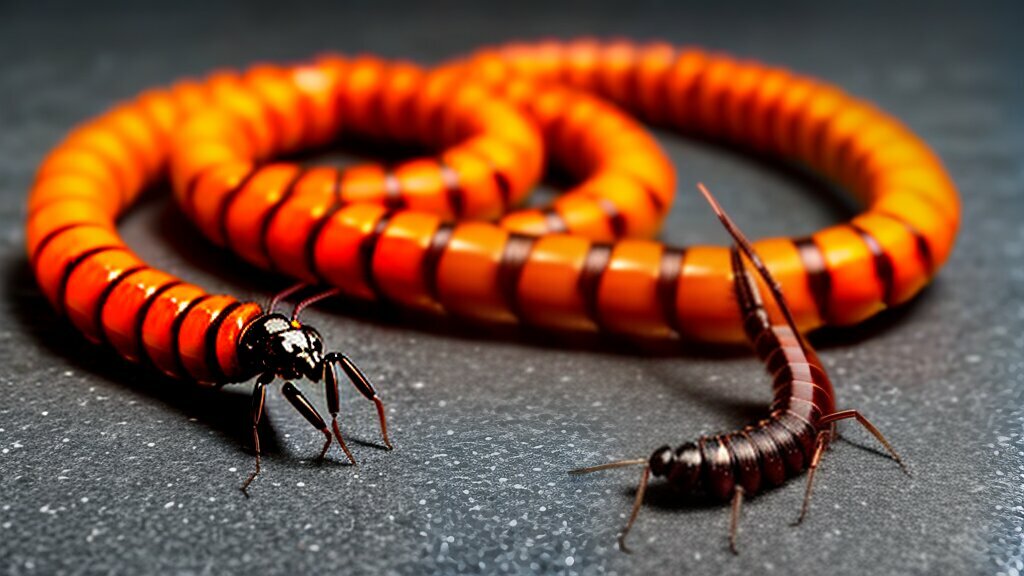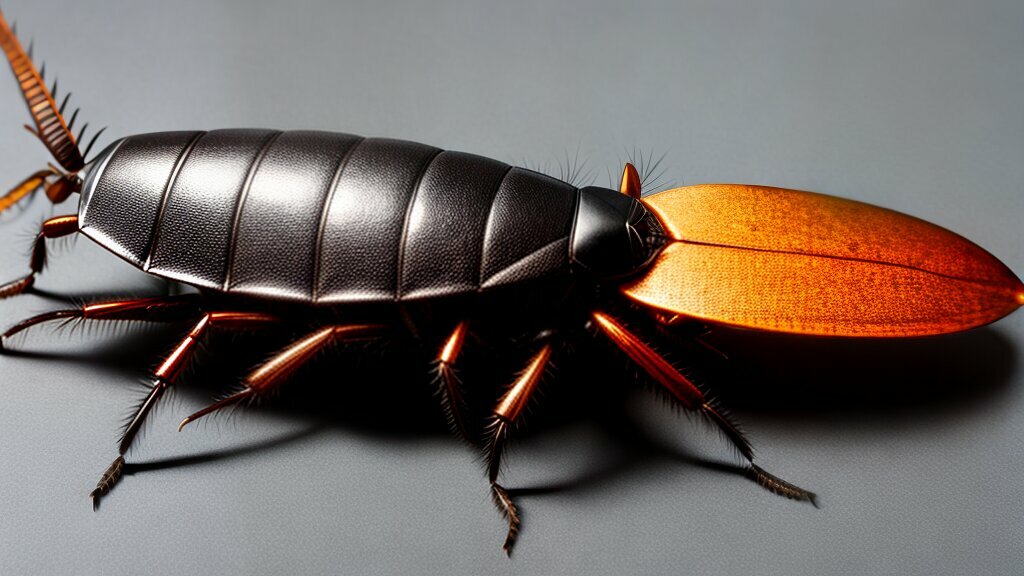When it comes to household pests, centipedes and cockroaches are two of the most common. While they may share some similarities, there are a number of key differences between these two pests that homeowners should be aware of. In this article, we’ll explore the physical characteristics, behavioral patterns, and habitats of centipedes and cockroaches in order to help you better identify and manage any pest problems you may encounter.
Key Takeaways:
- Centipedes and cockroaches are both common household pests.
- There are key differences in the physical characteristics and behavioral patterns of these two pests.
- Understanding these differences can help homeowners better identify and manage pest problems.
Physical Characteristics of Centipedes
Centipedes are arthropods characterized by their long, flattened bodies and numerous legs. They typically have between 15 and 177 pairs of legs, depending on the species, which makes them easily distinguishable from other arthropods like millipedes and spiders. Centipedes are also known for their unique color patterns, which can range from shades of brown to bright reds and yellows.
Did you know? The centipede with the most legs is the illacme plenipes found in California and has up to 750 legs, making it the animal with the highest number of legs in the world.
Additionally, centipedes possess long, segmented antennae and a pair of venomous claws, or fangs, which they use to subdue their prey. These claws are located at the front of their bodies, and centipedes use them to inject venom into their prey, paralyzing or killing it before feeding.
The body structure and number of legs of centipedes may vary depending on the species, but they all share a common characteristic of being fast movers with an ability to climb walls and ceilings. Their unique color patterns and venomous claws make them easily recognizable and have contributed to their notoriety in popular culture.
Physical Characteristics of Cockroaches
Cockroaches are known for their distinct physical traits that help distinguish them from other insects. These hardy insects are typically reddish-brown to dark brown in color and vary in size from 0.6 to 3 inches in length. They have an elongated, oval-shaped body with six spiny legs, a pair of long antennae, and two pairs of wings.
The body of a cockroach is divided into three segments, including the head, thorax, and abdomen. The head of a cockroach is small and triangular-shaped, with two compound eyes, two simple eyes, and a pair of antennae. The antennae help the cockroach sense its environment and locate sources of food and water.
The thorax of a cockroach is the middle section of its body and contains the muscles and legs. The legs of a cockroach are strong and spiny, allowing them to move quickly and easily over a variety of surfaces. The abdomen of a cockroach is the largest segment and contains the digestive, reproductive, and respiratory systems.
Cockroaches also have the ability to regenerate limbs and antennae, making them incredibly resilient and adaptable insects. These physical characteristics, combined with their ability to reproduce quickly, make cockroaches one of the most successful and hard-to-control pests.
Behavioral Patterns of Centipedes
Centipedes are carnivorous and use their venomous fangs to hunt insects, spiders, and other small prey. They are primarily nocturnal and prefer dark, damp environments, such as rotting logs, leaf litter, and soil. They can also be found in basements, crawl spaces, and other areas that provide adequate humidity and cover.
Centipedes have a unique method of reproduction. Rather than laying eggs, they deposit their fertilized eggs in nests or burrows and guard them until they hatch. Once the young centipedes emerge, they undergo several stages of molting before reaching adulthood.
Centipede Hunting Techniques
Centipedes are skilled hunters and use a variety of techniques to catch their prey. Some species use their speed and agility to run down their prey, while others employ ambush tactics. They may also use their venom to incapacitate their prey and then consume it at their leisure. Despite their intimidating appearance, most centipede species are not dangerous to humans unless provoked.
“Centipedes are skilled hunters and use a variety of techniques to catch their prey.”
Behavioral Patterns of Cockroaches
Cockroaches are known for their adaptable nature and ability to survive in a variety of environments. They are primarily active at night, preferring to hide in dark crevices during the day. Cockroaches are omnivorous and will eat almost anything, including human food, garbage, and even other insects.
One of the most remarkable behavioral patterns of cockroaches is their ability to survive without food for extended periods. Cockroaches can live for a month or more without food and can survive for up to a week without water. They reproduce quickly, with females laying up to 40 eggs at a time.
Cockroaches are attracted to warm and humid environments, and can commonly be found in kitchens, bathrooms, basements, and other damp areas. They often enter buildings through small cracks and crevices, and can quickly establish large infestations.
Effective pest management for cockroaches involves a combination of sanitation practices and targeted insecticide treatments. Eliminating food and water sources, sealing entry points, and using baits and sprays can help control cockroach populations and prevent future infestations.
Habitat of Centipedes
Centipedes are found in a variety of habitats, but they typically prefer dark and damp environments. They can be found in soil, leaf litter, under rocks, in logs, and in crevices in buildings. Centipedes are often found in basements, crawl spaces, and other areas where moisture is present.
Centipedes are active hunters and will often venture out of their hiding spots at night to hunt for prey. They are particularly attracted to areas with a high concentration of insects, such as basements and garages.
It is important to keep areas where centipedes may be present clean and dry. This will help to reduce the number of hiding spots available to them and make it more difficult for them to survive.
Habitat of Cockroaches
Cockroaches are known for their adaptability and can be found in a wide range of environments. However, they prefer warm and humid environments, making kitchens, bathrooms, and basements ideal habitats for them.
These pests can also thrive in areas with access to food and water sources, such as garbage cans, drains, and leaky pipes. They are known to hide in tight spaces, like cracks in walls and floors, to avoid detection.
Cockroaches are capable of surviving in a variety of conditions and have been found in both urban and rural areas, including homes, restaurants, offices, and even outdoor spaces.
Difference in Reproduction and Lifespan
Centipedes and cockroaches have distinct reproductive strategies and lifespans. While centipedes reproduce sexually, laying eggs that hatch into larvae, cockroaches reproduce asexually, producing egg cases that contain multiple offspring. Centipedes typically have shorter lifespans, typically living for up to six years, while some species of cockroaches can live for several years.
Another significant difference is that centipedes exhibit parental care, with the mother guarding the eggs and young until they are mature enough to fend for themselves. In contrast, cockroaches do not provide any parental care, abandoning their egg cases soon after they are laid.
| Centipedes | Cockroaches | |
|---|---|---|
| Reproduction | Sexual | Asexual |
| Lifespan | Up to 6 years | Several years |
| Parental Care | Present | Absent |
Understanding the differences in reproduction and lifespan between centipedes and cockroaches can help with identifying and managing infestations of these pests.
Pest Management for Centipedes
Centipedes can be difficult pests to control, but there are several effective measures that can be taken to manage infestations and prevent future problems. The following tips and strategies can help keep centipedes at bay:
- Reduce moisture levels: Centipedes thrive in damp environments, so it’s important to keep moisture levels in the home to a minimum. This can be achieved by fixing leaky pipes, using a dehumidifier, and ensuring good ventilation in areas with high humidity levels.
- Eliminate food sources: Since centipedes feed on other insects, reducing their food sources can help curb their population. Regular cleaning and proper food storage can prevent the buildup of crumbs and other debris that can attract insects.
- Seal entry points: Centipedes can enter homes through tiny cracks and gaps in walls, doors, and windows. Sealing these entry points with caulk or weatherstripping can help keep them out.
- Remove clutter: Centipedes often hide in cluttered areas, so keeping the home tidy and free of unnecessary items can help reduce their hiding spots.
- Use insecticides: Chemical treatments can be effective in controlling centipedes. However, it’s important to use them safely and according to the label instructions. For severe infestations, it may be necessary to hire a professional pest control service.
By following these tips, homeowners can successfully manage centipede infestations and prevent future problems.
Pest Management for Cockroaches
Cockroaches are a common pest found in homes and businesses, and proper pest management is essential to keep their populations under control.
Sanitation: Keeping your home or business clean is the first step in preventing and controlling cockroach infestations. Cockroaches are attracted to food and water sources, so be sure to clean up spills and crumbs immediately. Empty trash cans regularly, and store food in airtight containers. Keep your home or business free of clutter, as cockroaches like to hide in stacks of paper or boxes.
Sealing Entry Points: Cockroaches can enter your home or business through the smallest of cracks and openings. Seal all entry points, including gaps around doors and windows, holes in walls or floors, and gaps in pipes or electrical lines. Use caulk or weather stripping to seal these areas, and repair any damage to screens or vents.
Insecticides: Insecticides can be an effective way to control cockroach populations. There are many different types of insecticides available, including baits, sprays, and dusts. Choose an insecticide that is labeled for use against cockroaches, and follow the instructions carefully. Be sure to keep insecticides out of the reach of children and pets.
Professional Pest Control: If your cockroach infestation is severe or persistent, consider hiring a professional pest control company. Pest control professionals have access to stronger insecticides and can provide more thorough treatments. They can also offer advice on preventing future infestations.
Remember, proper pest management is essential in controlling cockroach infestations. By following these tips, you can keep your home or business free of these unwanted pests.
Conclusion
Overall, it is important to understand the main differences between centipedes and cockroaches. While both pests can be unwelcome guests in the home, they have distinct physical characteristics and behavioral patterns that require specific pest management strategies.
Centipedes
When dealing with centipedes, it is important to focus on prevention methods, such as removing their favored habitats, such as damp areas and debris. If infestations do occur, effective pest control measures include using insecticides and sealing entry points to prevent future invasions.
Cockroaches
Cockroaches, on the other hand, thrive in warm and moist environments, such as kitchens and bathrooms. Effective pest management strategies for cockroaches include practicing good sanitation habits, removing potential food sources, and using insecticides as necessary.
By understanding the differences in reproduction, lifespan, and habitat preferences between centipedes and cockroaches, individuals can take the necessary steps to prevent and manage infestations, ensuring a pest-free home or environment.
FAQ
Q: What are the main differences between centipedes and cockroaches?
A: Centipedes and cockroaches differ in their physical characteristics, behavior, and preferred habitats.
Q: What are the physical characteristics of centipedes?
A: Centipedes have a distinct body structure, numerous legs, and various color patterns.
Q: What are the physical characteristics of cockroaches?
A: Cockroaches have a specific body shape, size, and coloration.
Q: How do centipedes behave?
A: Centipedes exhibit specific behavioral patterns, including their hunting techniques and favored habitats.
Q: How do cockroaches behave?
A: Cockroaches have unique feeding habits, nesting preferences, and the ability to adapt to different environments.
Q: Where do centipedes usually live?
A: Centipedes are commonly found in damp areas, soil, and underneath logs or rocks.
Q: What is the preferred habitat of cockroaches?
A: Cockroaches prefer dark and warm areas, such as kitchens, bathrooms, and basements.
Q: How do centipedes and cockroaches differ in reproduction and lifespan?
A: Centipedes and cockroaches have different reproductive strategies and varying lifespans.
Q: How can one manage centipede infestations?
A: Effective pest management for centipedes includes prevention methods and utilizing pest control measures.
Q: What are some strategies for managing cockroach populations?
A: Managing cockroaches involves sanitation practices, sealing entry points, and using appropriate insecticides.

